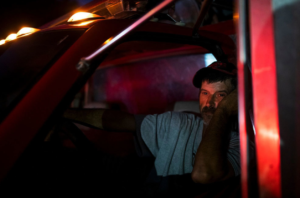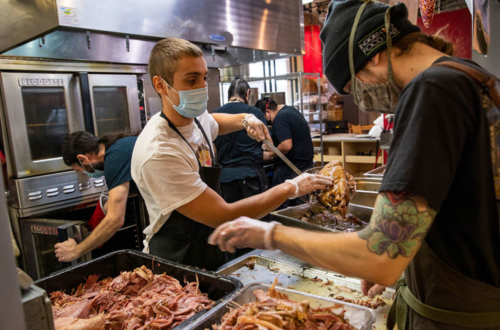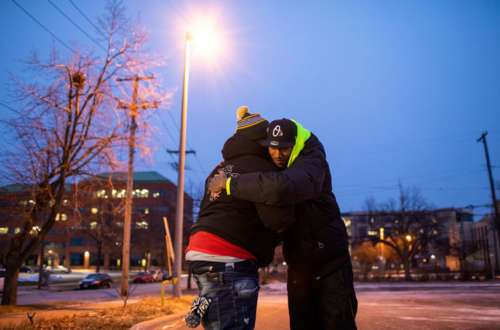
Willard Marcum, an EMT, drives a vehicle through a food bank in Dunlow, West Virginia.
By Debra Adams Simmons, HISTORY Executive Editor for National Geographic, December 28th, 2020
https://email.nationalgeographic.com/H/2/v600000176
Houston’s Chris Williams was terrified when the pandemic began because he feared he would lose his restaurant. He dropped his prices and converted to a takeout spot. Then he turned his attention to those most in need.
“We switched up our entire business model to where we took profitability out of the equation and focused on sustainability, sustaining the business itself and then the people that make the business run,” Williams told Nat Geo’s Tucker Toole.
“We dropped all our prices by about 40% on average, redid all of our menus, sourced cheaper ingredients while still putting the same amount of care and love into our meals.”
Williams created a nonprofit, Lucille’s 1913, named for the year his great grandmother launched her own community catering business. It began serving meals to the first responders.
He was able to donate more than 10,000 meals through the World Central Kitchen in addition to providing thousands of meals each week to front line workers and vulnerable local residents. He saved his restaurant, saved staff jobs, and fed people in a city where one in five residents don’t have enough to eat.
North and south, urban and rural, food industry leaders across the U.S. have jumped in to help address the nation’s growing food emergency. More than 50 million Americans did not have enough food in 2020, a number made worse by the pandemic.

PHOTOGRAPHS BY MADDIE MCGARVEY
Sharing the little you have: In rural Kentucky and West Virginia, people often drive 45 minutes to swamped food pantries. In Clay County, West Virginia, Jen Lively told Nat Geo’s Oliver Whang that she’d probably starve without regular food deliveries from a high school teacher. Lively (pictured at left, cooking beans for dinner on her wood stove) takes in any of her son’s friends who are homeless. (At right, Brian Lively helps his parents dig for wild roots like black cohosh, bloodroot, and ginseng; the crops, sold for homeopathic medicines, provide the Livelys’ only source of income.)

PHOTOGRAPH BY DAVID GUTTENFELDER
Chefs at work: Twice a day, five days a week, furloughed chefs in Minneapolis make hot meals for the hungry, from the homeless to overwhelmed working parents, ESPN’s Liz Merrill wrote for Nat Geo. The Minnesota Central Kitchen, sponsored by Second Harvest Heartland, has served 1.1 million meals since March. Inside Sean Sherman’s Indigenous Food Lab (above), chefs prepare mass meals of duck to be distributed to elders in indigenous communities in need across Minnesota.

PHOTOGRAPH BY DAVID GUTTENFELDER
Accepting help: In Queens, New York, people often have to wait hours in line for a food pantry, a Nat Geo video shows. At a tent encampment where she lives in St. Paul, Minnesota, Christy Haanen (pictured above, at right) accepts a Thanksgiving meal. “Not all of us choose to be out here,” Haanen says. “But many don’t have a family. They don’t have anybody.”

‘To show that we care’: Distributing free meals of chicken, rice, and salad in a St. Paul parking lot, volunteer Courtney Bivens (right), hugs a man he knew from the neighborhood who approached. “This pandemic has taken its toll on everybody, and there are people who have been hit hardest, are less fortunate, don’t have places to live,” he says. “Our purpose it to show that we still care—that we really gave a damn.”
How to find a food bank.

Calling on St. Germaine, the Violet Flame
and Mother Theresa for community,
an end to all food insecurity.

